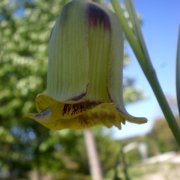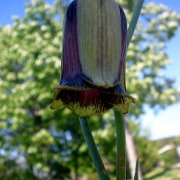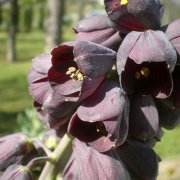Care of the bulbous plant Fritillaria or Fritillaries |
|
The genus Fritillaria, family Liliaceae, includes 100 species of bulbous plants native to the Mediterranean basin, North America and Asia. Some species are: Fritillaria graeca, Fritillaria imperialis, Fritillaria persica, Fritillaria meleagris, Fritillaria atropurpurea, Fritillaria liliacea. Common name: Fritillaries. They are bulbous plants that reach 30 cm (0.98 feet) or 1 meter (3.28 feet), depending on the species. The intense green leaves can be tapered or lanceolate. The attractive bell-shaped flowers appear in small clusters or solitary and can be brown, red, pink, yellow, green or orange, depending on the species. They bloom from late winter to early summer. Fritillaries are used in rockery, in groups of bulbous plants, in mixed borders and in pots for balconies and terraces. Fritilaria grows in full sun and semi-shade exposures and protected from the wind. It does not resist temperatures below 5 ºC (41 ºF). In regions with a Mediterranean climate it is better to avoid direct sun. The soil can be a well-drained garden substrate with coarse sand. Transplantation or planting is done in autumn. Water moderately, waiting for the substrate to dry. Slightly increase watering when flower buds appear; stop watering when the leaves turn yellow after flowering. Fertilize with organic powder fertilizer in autumn; from spring to early summer fertilize once a month with mineral fertilizer. Prune off wilted flower stems. The bulbs can be left buried dry (without watering). Fritillaria is a sensitive plant to excess watering because it can rot the bulb. Fritillaries propagate by separating the bulbs in mid-summer when the plant goes to rest. |
Images of the bulbous plant Fritillaria or Fritillaries |
Find plants
Fritillaria or Fritillaries | Care and Growing
© 2025 FavThemes





